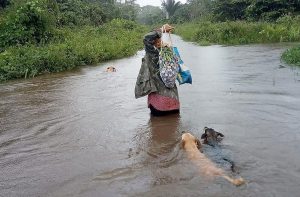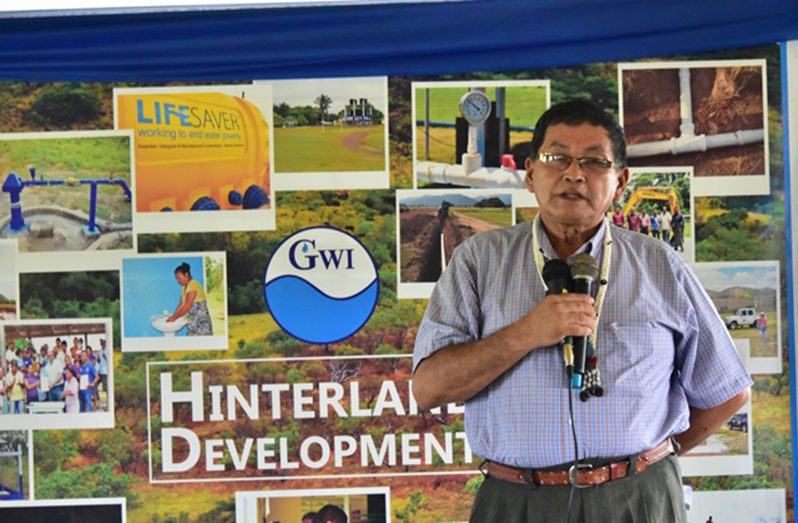— Agri Ministry pledges support to farmers
AS floodwaters in Region Nine have now receded, farmers are assessing the damage done to their crops and counting their losses.
The region’s chairman, Brian Allicock, on Sunday told the Guyana Chronicle that besides interrupting residents’ daily lives, the recent heavy rainfall and severe flooding has also affected the region’s agricultural sector; over 22,000 farms have been affected.
Allicock highlighted that many residents in the region earn their living from farming. Most of the farmers he said, plant cassava to make farine and cassava bread.
Seasonal flooding is said to occur when water from the Amazon Rainforest in Brazil travels through the Rio Negro River to the Brancho River and, eventually, makes its way to Region Nine.
However, he said that this year’s wet season saw above-normal rainfall, resulting in the severe flooding which left many farms inundated for more than a month; this resulted in many cassava roots being damaged.

Since the water has now receded in the region, Allicock said farmers have been trying to see what they can salvage in the aftermath of the floods.
Additionally, Allicock posited that the Ministry of Agriculture has since pledged to assist farmers in the region to assist them to get back on their feet.
Up to press time on Sunday, Allicock said several pieces of agricultural equipment were donated to the Regional Democratic Council to assist farmers.
In a previous news report, it was revealed that the Government of Guyana has moved ahead to design recovery interventions for those affected by the ongoing floods.
This indication was given by President Dr. Irfaan Ali, who said that in addition to the work being done by the Caribbean Disaster Emergency Management Agency (CDEMA), local authorities are also executing continuous assessments of the countrywide floods.
“We have had our own internal assessments ongoing; it’s devastating to say the least. We are now awaiting the final report from CDEMA…and then we are going to look at that with our local data collection and then we’ll have a full assessment,” Dr. Ali said.
He gave the assurance that the government will not prolong the recovery process by waiting on the final report to mobilise the next phase of assistance. “We are not waiting on the report; it’s just the final numbers now that we are waiting on,” President Ali posited.
A Detailed Damage Sector Assessment (DDSA) on the floods was conducted across seven sectors, namely health, water and sanitation, infrastructure and housing, agriculture, social services, and shelter and mining in Regions Two, Five, Six, Seven and 10.
The preliminary findings highlighted moratoriums on loans and grants for farmers, the need for relocation of some communities, the establishment of septic tanks and a revision of building codes are some of the preliminary recommendations stemming from the DDSA. The need for social services such as psychosocial support, welfare to help families sustain themselves and specific infrastructure rehabilitation were also highlighted.



.jpg)










